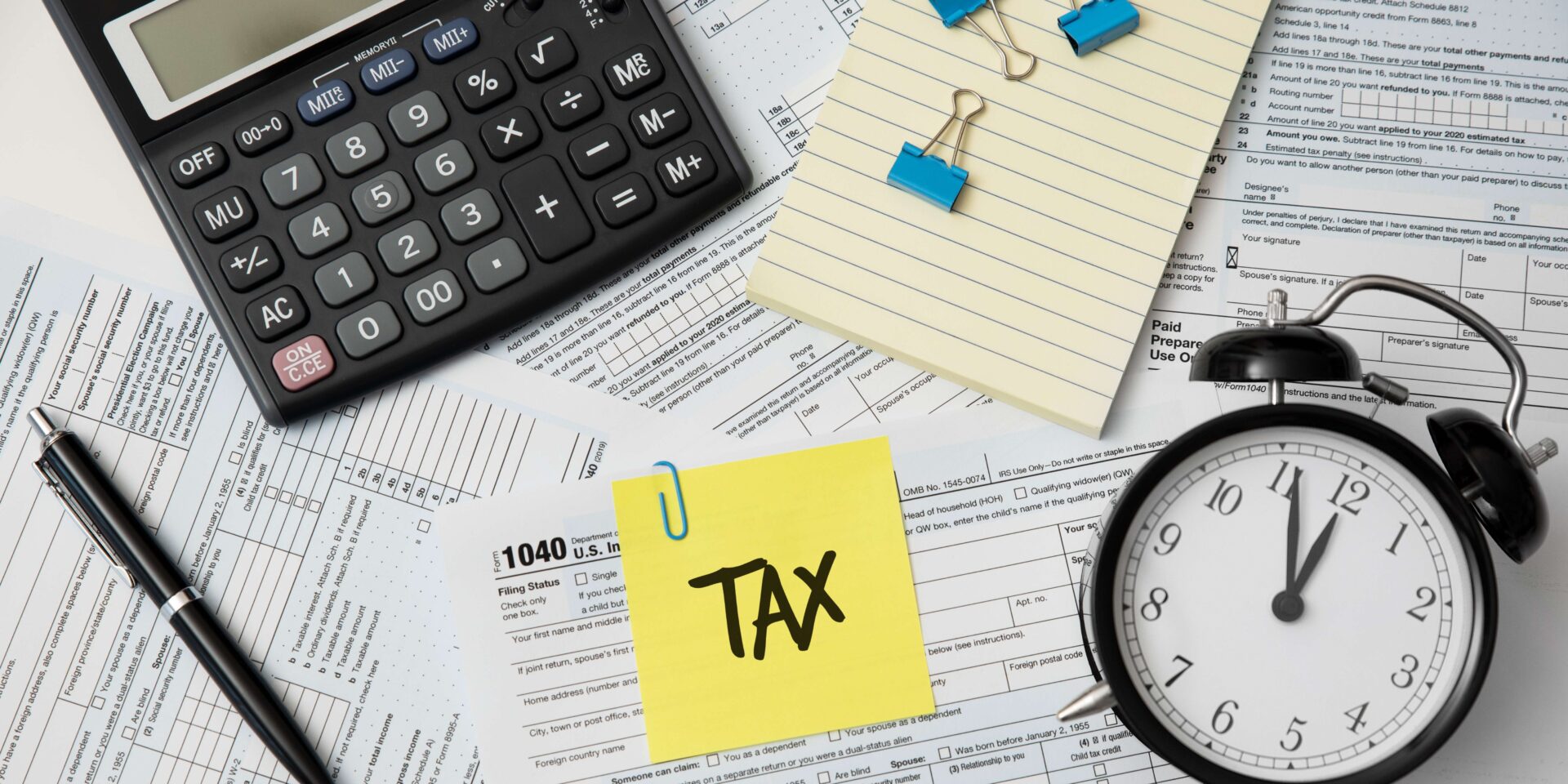Language:
How Do I File Taxes if I Have Two Businesses?

Tax time can be confusing if you own multiple businesses, possibly with different business structures. You may wonder, “How do I file taxes if I have two businesses?” Fortunately, it doesn’t have to be complicated. If you own two or more businesses, how you file taxes will depend on the business structure of each.
Understanding the implications of different business entities and how they will impact your personal tax return can simplify tax time. Read on to understand how to file taxes for multiple businesses.
Understanding the Basics of Filing Taxes for Each Business Structure
The basic business structures are sole proprietorship, partnership, LLC, S corporation, and C corporation. Each has a unique tax treatment. Here’s an overview of how the IRS views each entity.
Sole Proprietorship
With a sole proprietorship, business income isn’t separate from your personal income, as it’s not a separate legal business entity. According to the IRS, a sole proprietorship is a disregarded entity and doesn’t need to file a tax return separately from its owners.
Independent contractors, freelancers, or single-member LLC owners are taxed as sole proprietors by default. A sole proprietor’s only tax return is Form 1040. You will report business revenue and deductible expenses on Form 1040 Schedule C.
Partnership
A business partnership is also considered a pass-through entity. With a partnership, earnings are allocated to the partners at agreed-upon percentages. Each partner will report their business income on their individual income tax return.
IRS Form Schedule K-1 is given to each partner, listing their earnings portion to report. You’ll use the information on Form K-1 to file Form 1040 Schedule E with the IRS as part of your individual income tax return.
In addition, partnerships must file an information return. That means the IRS doesn’t consider partnerships to be disregarded entities. To inform the IRS about revenue and tax deduction information, partnerships must file Form 1065.
LLC
A limited liability company or LLC has flexible taxation options based on the owners’ election. An LLC can be taxed as a sole proprietorship, partnership, S corporation, or C corporation.
A single-member LLC is a disregarded entity by default and is taxed like a sole proprietorship. An LLC with more than one owner is automatically taxed as a partnership. In that case, you’ll need to file the forms mentioned above.
However, the LLC members can also elect to be taxed as a C corporation or S corporation. In that case, you’ll need to make the same required tax filings as an S corporation or a C corporation. Learn more about how LLCs are taxed or how LLC tax rates are calculated.
S Corporation
An S corporation is a pass-through entity, which means it pays taxes through its owners, called shareholders. An S corporation must file an information return. For an S corporation, you must report earnings with Form 1120-S.
Shareholders in an S corporation receive a K-1, which states their portion of the company’s profits. Shareholders then pay taxes on their K-1 earnings on Form 1040 Schedule E.
S corporation shareholders participating in management can be considered employees. That means you can receive a reasonable salary as an S corp shareholder-employee before receiving distributions. In that case, you could receive a Form W-2, the employee wages statement, and a Form K-1 for distributions, and report both as part of your earnings on your individual income tax return. Learn more about S corporation vs. LLC.
C Corporation
A C corporation is always considered a separate legal taxpaying entity. C corporations file IRS Form 1120 to report and pay income tax. They pay a 21% entity-level tax on earnings, plus applicable state taxes, before passing on income to their shareholders through dividends.
C corporations must distribute Form 1099-DIV to shareholders, who will use the information provided to report dividend income on their personal taxes.
Like an S corporation, C corporation shareholders who manage the company can also be considered employees and earn W-2 wages. If you’re an employee-shareholder of a C corp, you’ll report and pay tax on both W-2 and 1099-DIV earnings. Learn more about C corporation tax rates here.
How to File Taxes if You Have Two Businesses?
How to file taxes if you have two businesses will depend on the type of the business. For example, if you have two unrelated businesses like a sole proprietorship or a single-member LLC, you will usually prepare separate Schedule C forms for each.
You use Schedule C to report each business’s income or losses as part of your income tax return. In addition, you may need to file separate Schedule C forms for yourself and your spouse if you each have your own business.
Sole proprietorships, partnerships, and S corporations can pass their income to the owner’s income tax returns, although partnerships and S corporations must file information about revenue and expenses with the IRS.
C corporations prepare corporate tax returns and report profits and losses directly to the IRS. The corporation must pay any tax due at the corporate level directly to the IRS. If you own multiple businesses, you generally need to file separate schedules and in some cases, separate returns for each business.
How to Pay Income Taxes?
Whether the company pays taxes directly or you have to report income on your individual income tax return varies by business structure. For example, if you have a sole proprietorship and a C corporation, you will need to file two tax returns, one for your individual income tax and one for the corporation. Read on to understand how to pay income tax based on business structure.
Sole Proprietorship
A sole proprietorship will pass all business income through to the owners. It’s a disregarded entity. You’ll file taxes using Form 1040, with a separate Schedule C to report business revenue and deductible expenses for each business.
Partnership
If you own two or more partnerships, each company must file Form 1065 with the IRS to report company revenue and tax information. Each company is also required to give each partner Form K-1. Then, you will file an individual Schedule K-1 for each company with your income tax return to report all income.
LLC
Depending on the elected structure of your LLC, you will file taxes with different forms. If you have two single-member LLCs, you will file taxes like a sole proprietorship, using a separate Schedule C for each business.
If you have two multi-member LLCs, you will file like a partnership, with a Form 1065 for each company, plus a Schedule K-1 for each company reported on your individual income tax return.
If you elect to be taxed as an S corporation or a C corporation, the correct forms are listed below.
S Corporation
If you have more than one S corporation, you must report earnings with Form 1120-S for each company. You will also receive a K-1 to report company earnings on Form 1040 Schedule E of your individual income tax return. You will need to file a separate Schedule E for each company.
If you also receive a salary from the S corporation, you will receive a Form W-2 and report that on your individual tax return as standard income.
C Corporation
If you have more than one corporation, each corporation must file IRS Form 1120 to report and pay income tax. Each corporation must also distribute Form 1099-DIV to shareholders. When you receive Form 1099-DIV, you can use that to report dividend income on your personal tax return. If you also earn wages as a W-2 employee, you’ll report that as income on your personal tax return.
How to Pay Payroll Taxes?
The process for paying payroll taxes, if you have employees for multiple businesses, is the same as for a single business. Each business entity is a separate structure responsible for its individual payroll taxes.
You’ll have to withhold payroll taxes from every employee’s salary and remit them to the federal government. These payroll taxes are used to fund Social Security and Medicare. Whether you have one business or 20, you’ll have to withhold payroll taxes on all employee salaries but not on payments to freelancers or independent contractors who work for your company.
Final Tips on Filing Taxes for Two Businesses
Whether you need to file completely separate tax returns or separate schedules with your individual income tax return will depend on the type of business entity you have and the tax status you’ve elected for that entity.
If you want to ensure you keep clear records throughout the year to make tax season easier, consider doola Books. It offers simple bookkeeping services designed to help busy founders like you. Get doola Books to streamline bookkeeping and free up valuable time to focus on your core business. You can also get doola’s tax package to save even more of your valuable time!
FAQs
Do I need to file separate tax returns for each of my businesses?
Whether you need to file separate tax returns for each business depends on the business structure. If you have two or more corporations, each will need to file separate tax returns. However, if you have multiple pass-through entities like an LLC or sole proprietorship, you can report all business income on your individual income tax return.
What tax forms do I need to use for each business?
The tax forms you need to use for each business depend on the business structure. You can find a complete guide to necessary tax forms by business structure here.
How do I report income and expenses for each business?
You will need to report business expenses from the related business income. You subtract the total business expenses from revenue to calculate the total taxable income. Allowed business deductions are ordinary and necessary costs based on the industry in which the business operates. They must be directly or indirectly related to the business.
Can I deduct expenses that are shared between my two businesses?
If the expenses are shared between your two businesses, you can deduct an appropriate portion from each business’s income, not exceeding 100% of the total expense. For example, if you use a cell phone for both businesses equally, you could deduct 50% of the cost from each business’s income.
Do I need to pay self-employment taxes for each business?
Yes, you will need to pay self-employment tax on all self-employed income. You don’t need to pay self-employment tax on W-2 income.
Can I use the same Employer Identification Number (EIN) for both businesses?
No, you cannot use the same EIN for two businesses. Each business needs its own EIN as a separate business entity.



